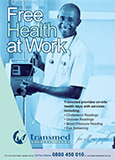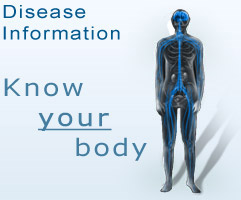Sleep Apnoea
During sleep air moves in and out of the lungs as the upper airway (throat), chest muscles and diaphragm move in coordinated motion. In a person with sleep apnoea, air movement is disrupted or reduced for short periods of time.
Sleep apnoea is a serious condition that can affect a person's ability to safely perform normal daily activities. Men are more commonly affected than women. Other risk factors include:
- middle and older age;
- being overweight or obese;
- high blood pressure; and
- type 2 diabetes mellitus.
Causes
The throat is surrounded by muscles that open and close the airway while speaking, swallowing or breathing. If these throat muscles relax incorrectly during sleep, or if the throat is abnormally small, the airway may be narrowed. This can result in snoring and decreased airflow into and out of the lungs, which is called obstructive hypopnoea. Complete closure of the airway blocks all air movement. A person may have no breathing for a short period (apnoea) or reduced breathing (hypopnoea) during sleep.
Changes in blood oxygen levels occur when one's breathing is abnormal during sleep. Even if the levels of oxygen in the blood change only slightly, the brain recognises that there has been an interruption in normal breathing; and that more effort is required to get air into the lungs. This may occur when the throat is completely or partially blocked.
This causes partial awakening from sleep. Although the brain may be partially awake, the person may not sense that he/she is awake. When these arousals occur, the throat muscles contract, the airway reopens and normal breathing resumes. This is often, but not always, associated with a loud snore or snort. The person often goes back to sleep quickly, usually without being aware of the episode. Some patients with obstructive sleep apnoea/hypopnoea awaken suddenly and completely with a sensation of gasping, smothering or choking.
Once sleep resumes, the throat muscles relax, the airway closes and the pattern repeats itself. This cycle of abnormal breathing, disruption of sleep, return to sleep and abnormal breathing may occur many times throughout the night. In addition to poor quality sleep, obstructive sleep apnoea/hypopnoea may be associated with an increased risk of or worsening of common heart problems.
Symptoms
The main symptoms of obstructive sleep apnoea/hypopnoea are loud snoring and severe daytime sleepiness. Sleepiness can also develop gradually over time to the point that the person accepts it as normal.
Other symptoms may include one or more of the following:
- restless sleep;
- awakening with choking, gasping or smothering;
- awakening with chest pain or discomfort;
- morning dry mouth or sore throat;
- morning confusion;
- morning headaches;
- frequent awakenings to urinate;
- memory impairment and difficulty concentrating;
- personality change; and
- impotence.
Diagnosis
A doctor may suspect sleep apnoea and may measure the size of the person's neck because large neck sizes (greater than 43 cm in men or 41 cm in women) are associated with increased risk of sleep apnoea. If a bed partner has observed the patient during episodes of choking or gasping in the night, this also increases the possibility of diagnosing sleep apnoea. However, the diagnosis can be established with certainty only by testing the patient during sleep.
Patients with obstructive sleep apnoea/hypopnoea are usually referred to a sleep laboratory for a full sleep study, which is called a polysomnogram. The polysomnogram measures:
- breathing effort and airflow;
- duration of the various stages of sleep;
- body position;
- movement of the arms/legs;
- blood oxygen level; and
- heart rate and electrocardiogram (ECG).
Home monitoring is available to perform a sleep study, but the reliability of the data is not as good as that obtained in a sleep laboratory. Thus, home monitoring is very rarely recommended.
Risks
Risks of sleep apnoea include:
- daytime sleepiness; and
- difficulty concentrating.
These symptoms increase the risk of accidents and errors in normal daily activities. Studies have shown that people with severe obstructive sleep apnoea/hypopnoea are more than twice as likely to be involved in a motor vehicle accident as people without this condition.
In addition, people with untreated obstructive sleep apnoea/hypopnoea may have an increased risk of problems such as high blood pressure, heart attack, abnormal heart rhythms or stroke. This may be due to the wide fluctuations in heart rate and blood pressure that occur in people with sleep apnoea.
Treatment
Obstructive sleep apnoea/hypopnoea is a chronic condition that can significantly improve with appropriate treatment. Treatment helps patients sleep without interruption, which reduces daytime sleepiness. Treatment of obstructive sleep apnoea/hypopnoea also decreases the risk of death, the frequency of visits with a healthcare provider (office visits or hospitalisation) and medical costs. Treatment can generally be divided into non-surgical and surgical approaches.
Non-surgical treatment
A number of non-surgical therapies may be recommended:
- Behavioural treatments - Changes in lifestyle and habits may reduce the severity of obstructive sleep apnoea/hypopnoea. For example, weight loss may be helpful for obese or even moderately overweight patients.
Unfortunately, it can be difficult to maintain weight loss.
- Continuous positive airway pressure - The first line non-surgical treatment for obstructive sleep apnoea/hypopnoea is a mechanical device that keeps the upper airway open during sleep. A continuous positive airway pressure device supplies air through a mask that fits on the nose, or over the nose and mouth. Devices which fit comfortably into the nasal opening, rather than over the nose, are also available. Patients should use continuous positive airway pressure whenever they sleep.
- The continuous positive airway pressure device is usually used for the first time in the sleep lab, where a technician can adjust the pressure needed to keep the airway open. Most patients are able to tolerate continuous positive airway pressure, especially if the mask fits comfortably. Once treatment with continuous positive airway pressure begins, improvements in alertness are often rapid.
- Dental devices - Dental devices that hold the lower jaw or tongue forward during sleep can also relieve obstructive sleep apnoea/hypopnoea. Such devices are less effective than continuous positive airway pressure and other positive airway pressure machines, but are preferred by some patients.
Surgical treatment
Surgery is generally reserved for patients who cannot tolerate or do not improve with non-surgical treatments such as continuous positive airway pressure or oral devices. Surgical procedures can reshape structures in the upper airways or surgically reposition the jaw, and may be helpful in some patients.
Uvulopalatopharyngoplasty is a commonly performed procedure where the surgeon removes the uvula and excessive tissue in the throat, including the tonsils (if present).
Other surgical techniques are also available, although it is hard to predict how effective a surgical treatment will be in reducing or eliminating sleep apnoea.
Tracheotomy is a surgical procedure that creates a permanent opening in the neck. It is reserved for patients with severe disease in whom less drastic measures have failed or are inappropriate. It requires dramatic lifestyle changes and is very rarely done.
Precautions
There is an increased risk of unintentional injury related to sleep apnoea.
- People with untreated sleep apnoea have an increased risk of causing motor vehicle accidents.
- Patients with obstructive sleep apnoea/hypopnoea should be careful while driving, using dangerous equipment or performing other activities that require vigilance and alertness.
- Alcohol and other products that induce sleepiness should be avoided, as these substances can worsen obstructive sleep apnoea/hypopnoea. This includes tranquilizers, sleeping pills and some anxiety medications (benzodiazepines).
References:
NICE Guidelines
 TransmedBanner4.jpg)

